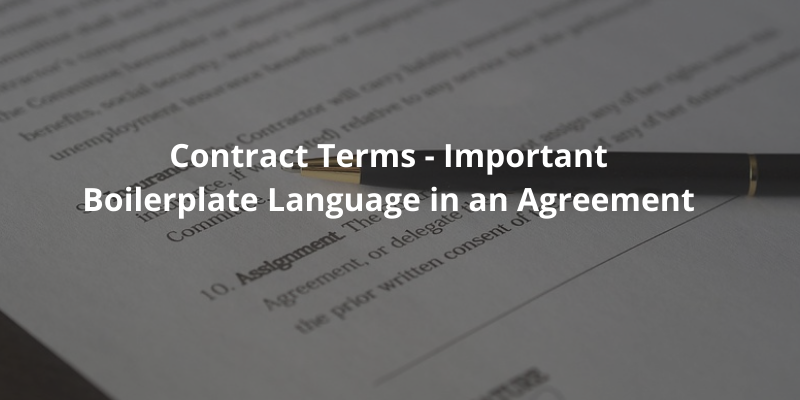Letter of Indemnity and Release


A letter of indemnity is a contractual and legal commitment to take responsibility for the losses of another person.
It is commonly used in commercial transactions for one party to assure the other party that if a certain event happens, the indemnified person will not suffer financial losses. The person giving the indemnity is known as the "indemnifier" and the person protected under the indemnity is known as the "indemnified". As it is a legal document and may end up being used as the basis of a claim in court, it is very important to get the language of the letter of indemnity right and complete. In addition, it is frequently executed as a deed and one will need to ensure the formalities of a deed are being followed.
People are often confused between a letter of indemnity and a guarantee. A letter of indemnity is a primary obligation to compensate the indemnified person in case of a loss, whereas a guarantee is a secondary obligation to pay or fulfill the debt or obligation of another person in the event of a default by the person responsible for the debt or obligation. A letter of indemnity does not depend on whether a third party performs its obligations, so long as the indemnified person suffered loss resulting from a certain event, the indemnifier is liable for compensation.
The principal purpose of an indemnity is to assure the other party that they will be protected from harm and compensated for any loss / damage suffered. When both parties agree on a contract, they have obligations to perform under the contract. Usually, one party agrees to pay the other party, and the other party agrees to provide the product or service. If one party breaches the contract (does not do what they agree to do), the other party may suffer losses, either by losing payment or not receiving the goods or services. It is also usual for certain service providers (e.g. financial institutions) to ask for an indemnity from the customers for things that they cannot control, like an indemnity in relation to receiving instructions by fax.
Another usual purpose of a letter of indemnity is to indemnify another party for tax purposes (e.g. value-added tax, withholding tax or sales tax), in particular in relation to a cross-border transaction. One might also provide an indemnity for the performance of an affiliate or a subsidiary. The indemnity clause can be included as part of the contract or under a separate letter of indemnity.
If either party lawfully exercises any right to terminate or rescind this [Agreement/Transaction Document/Deed] under any of its provisions or under the general law, then (in addition to any right or remedy which that party may have against the other party for breach of such [Agreement/Transaction Document/Deed][or in respect of breach of any warranty contained in this [Agreement/Transaction Document/Deed]) the other party shall be liable to indemnify that party (on an after tax basis) for all costs, charges and expenses incurred by it in connection with the negotiation, preparation and termination or rescission of this [Agreement/Transaction Document/Deed].
It is usual for a letter of indemnity to be executed as a deed. For a contract to be valid, one needs to demonstrate that something of benefit to the indemnifier or something which is a detriment to the indemnified. The advantage of executing the letter of indemnity as a deed is that there is no need to show adequate consideration (something of value has been given for the indemnity) to enforce a gratuitous promise under the deed. It is also easier to get a default judgement in court with an indemnity.
The following formalities should be observed for the letter of indemnity to be a deed:
Please refer to our guide on the execution of documents and deeds for more information.
A letter of release is to release a party from certain obligations in a contract. It closely relates to a termination letter where a contract is terminated (including a contract of employment) and the parties are released from obligations under a contract. For example, the parties may agree that from the termination date:
(a) the agreement is terminated:
(b) the parties release and discharge each other from the obligations under the agreement, including without limitation all claims and demands in relation to them;
(c) the parties will not be entitled to exercise and enjoy any further rights under the agreement.
Not the right document?
Don’t worry, we have thousands of documents for you to choose from:

10 Jun 2022
6 min read

2 Jun 2022
6 min read

27 May 2022
6 min read

20 May 2022
6 min read

9 May 2022
6 min read

3 May 2022
3 min read

25 Apr 2022
5 min read

31 Mar 2022
1 min read

29 Mar 2022
1 min read

20 Mar 2022
6 min read

12 Mar 2022
5 min read

21 Feb 2022
5 min read

31 Jan 2022
5 min read

13 Jan 2022
4 min read

3 Jan 2022
5 min read

7 Dec 2021
11 min read

14 Nov 2021
6 min read

1 Nov 2021
9 min read

21 Oct 2021
1 min read

17 Oct 2021
7 min read

7 Oct 2021
12 min read

16 Sep 2021
4 min read

14 Sep 2021
5 min read

10 Sep 2021
3 min read

31 Aug 2021
4 min read

23 Aug 2021
3 min read

16 Aug 2021
5 min read

30 Jul 2021
6 min read

23 Jul 2021
7 min read

13 Jul 2021
5 min read

2 Jul 2021
5 min read

24 Jun 2021
5 min read

15 Jun 2021
4 min read

4 Jun 2021
6 min read

28 May 2021
5 min read

21 May 2021
5 min read

14 May 2021
5 min read

7 May 2021
5 min read

30 Apr 2021
5 min read

23 Apr 2021
5 min read

16 Apr 2021
5 min read

9 Apr 2021
5 min read

1 Apr 2021
5 min read

26 Mar 2021
4 min read

19 Mar 2021
5 min read

12 Mar 2021
5 min read

5 Mar 2021
6 min read

26 Feb 2021
5 min read

19 Feb 2021
6 min read

11 Feb 2021
5 min read

29 Jan 2021
6 min read

29 Jan 2021
3 min read

22 Jan 2021
6 min read

15 Jan 2021
6 min read

8 Jan 2021
6 min read

31 Dec 2020
6 min read

24 Dec 2020
0 min read

24 Dec 2020
7 min read

18 Dec 2020
6 min read

11 Dec 2020
6 min read

4 Dec 2020
6 min read

27 Nov 2020
6 min read

27 Nov 2020
7 min read

22 Nov 2020
7 min read

13 Nov 2020
8 min read

12 Nov 2020
8 min read

7 Nov 2020
8 min read

5 Nov 2020
6 min read

30 Oct 2020
7 min read

29 Oct 2020
8 min read

23 Oct 2020
7 min read

19 Oct 2020
8 min read

16 Oct 2020
10 min read

7 Oct 2020
9 min read

28 Sep 2020
8 min read

18 Sep 2020
7 min read

9 Sep 2020
7 min read

3 Sep 2020
7 min read

27 Aug 2020
8 min read

27 Aug 2020
9 min read

19 Aug 2020
8 min read

17 Aug 2020
8 min read

11 Aug 2020
8 min read

11 Aug 2020
8 min read

10 Aug 2020
11 min read

10 Aug 2020
9 min read

7 Aug 2020
9 min read

4 Aug 2020
9 min read

3 Aug 2020
10 min read

23 Jul 2020
8 min read

23 Jul 2020
8 min read

12 Jul 2020
8 min read

5 Jul 2020
7 min read

25 Jun 2020
7 min read

12 Jun 2020
9 min read

11 Jun 2020
9 min read

9 Jun 2020
9 min read

8 Jun 2020
8 min read

4 Jun 2020
5 min read

4 Jun 2020
8 min read

2 Jun 2020
10 min read

28 May 2020
13 min read

25 May 2020
8 min read

1 May 2020
10 min read

1 Apr 2020
6 min read

1 Mar 2020
11 min read

1 Feb 2020
11 min read

8 Jan 2020
9 min read

1 Jan 2020
1 min read

10 Dec 2019
7 min read

26 Nov 2019
8 min read

5 Nov 2019
5 min read

24 Oct 2019
3 min read

1 Oct 2019
1 min read

1 Oct 2019
1 min read





